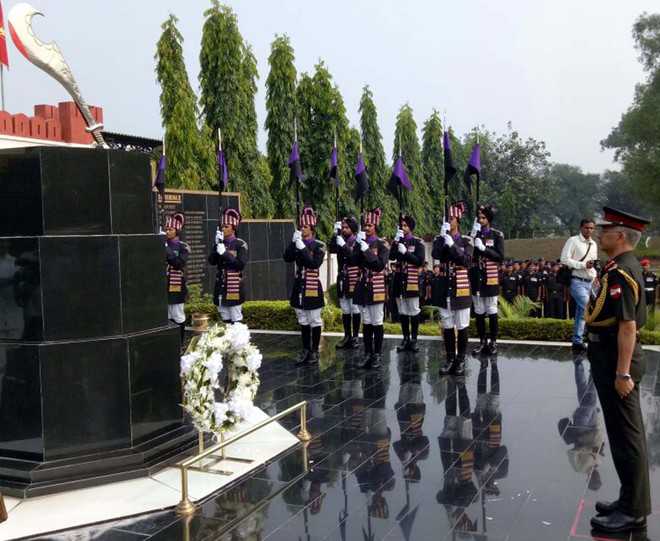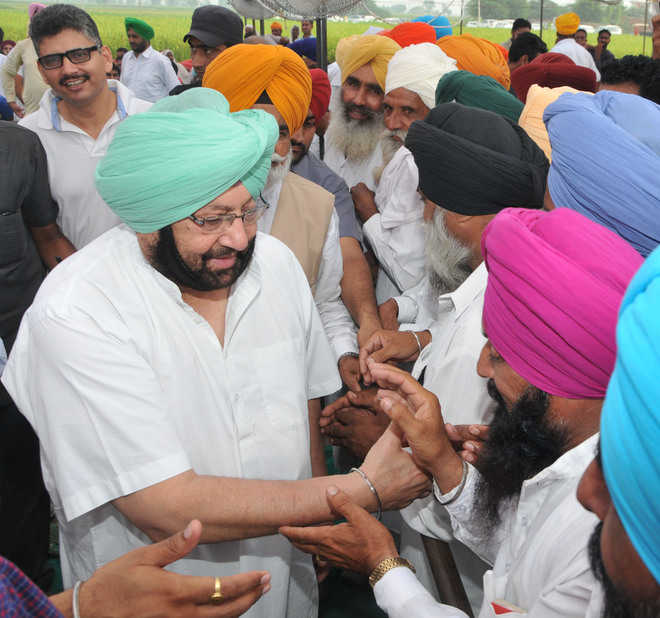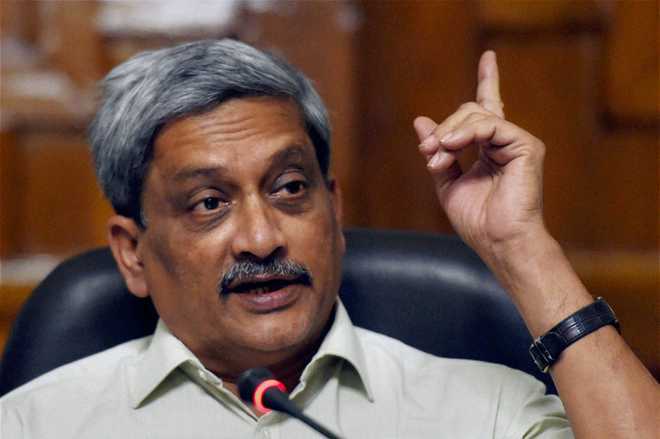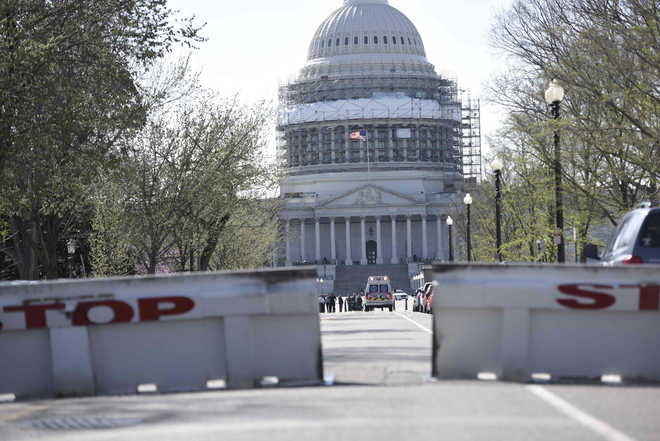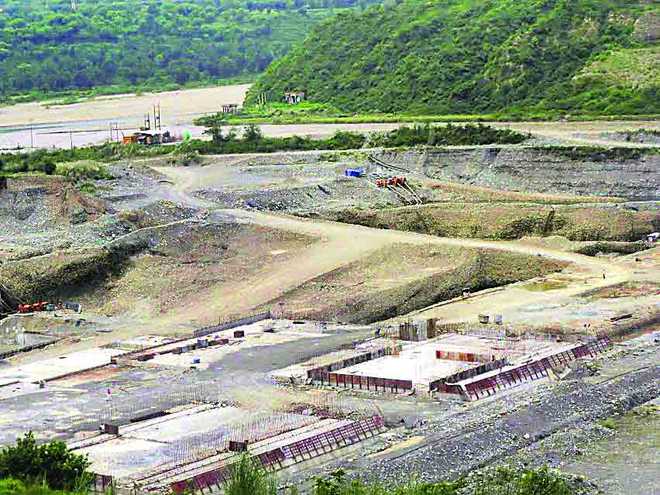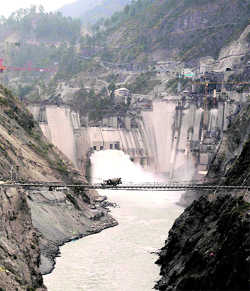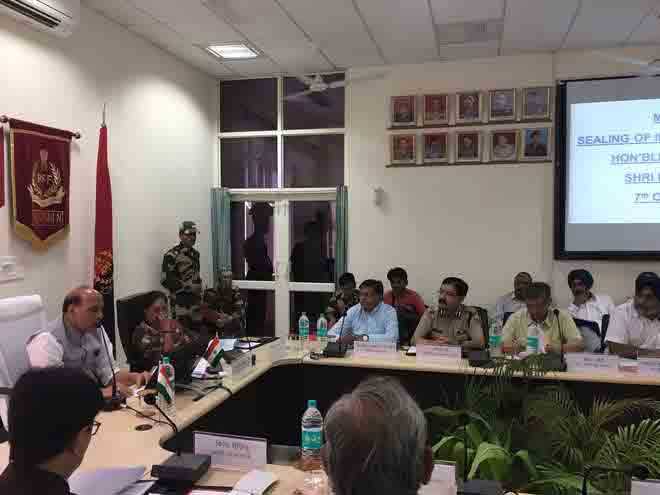
The meeting in Jaisalmer. Photo courtesy HMO India
Jaisalmer, October 7
India will completely seal its border with Pakistan by December 2018 by using effective means, including technological solutions, Home Minister Rajnath Singh said here today. Proposing a border security grid, he said suggestions had been invited from all stakeholders, including states that shared borders with Pakistan.(Follow The Tribune on Facebook; and Twitter @thetribunechd)Speaking to the media after reviewing the security situation on the border with ministers and officials of four states, he said the government planned to seal the entire border with Pakistan by December 2018 and a proper monitoring mechanism would be in place for it.“This project will be periodically monitored by the Home Secretary at the Central level, the BSF from the security forces’ perspective and Chief Secretaries at the state level,” the Home Minister said. “In riverines and Sir Creek area in Gujarat, we will make use of technology to seal the border.”Rajnath chaired a meeting which was attended by Rajasthan CM Vasundhara Raje, Deputy CM of Punjab Sukhbir Singh Badal, Gujarat and Rajasthan’s Home Ministers and the Jammu and Kashmir Chief Secretary. — PTI
By making khoon ki dalali remarks, Rahul Gandhi has crossed all limits. He insulted the bravery of our soldiers, 125 crore people… question is why you (Cong) are not happy and proud of this (surgical strikes) —Amit Shah, BJP chief
It (sealing border) is sheer rhetoric since the India-Pakistan border is already adequately sealed with two-tier fencing and a flood-lit concrete area between the two fences.
—Capt Amarinder Singh, PPCC Chief






















































